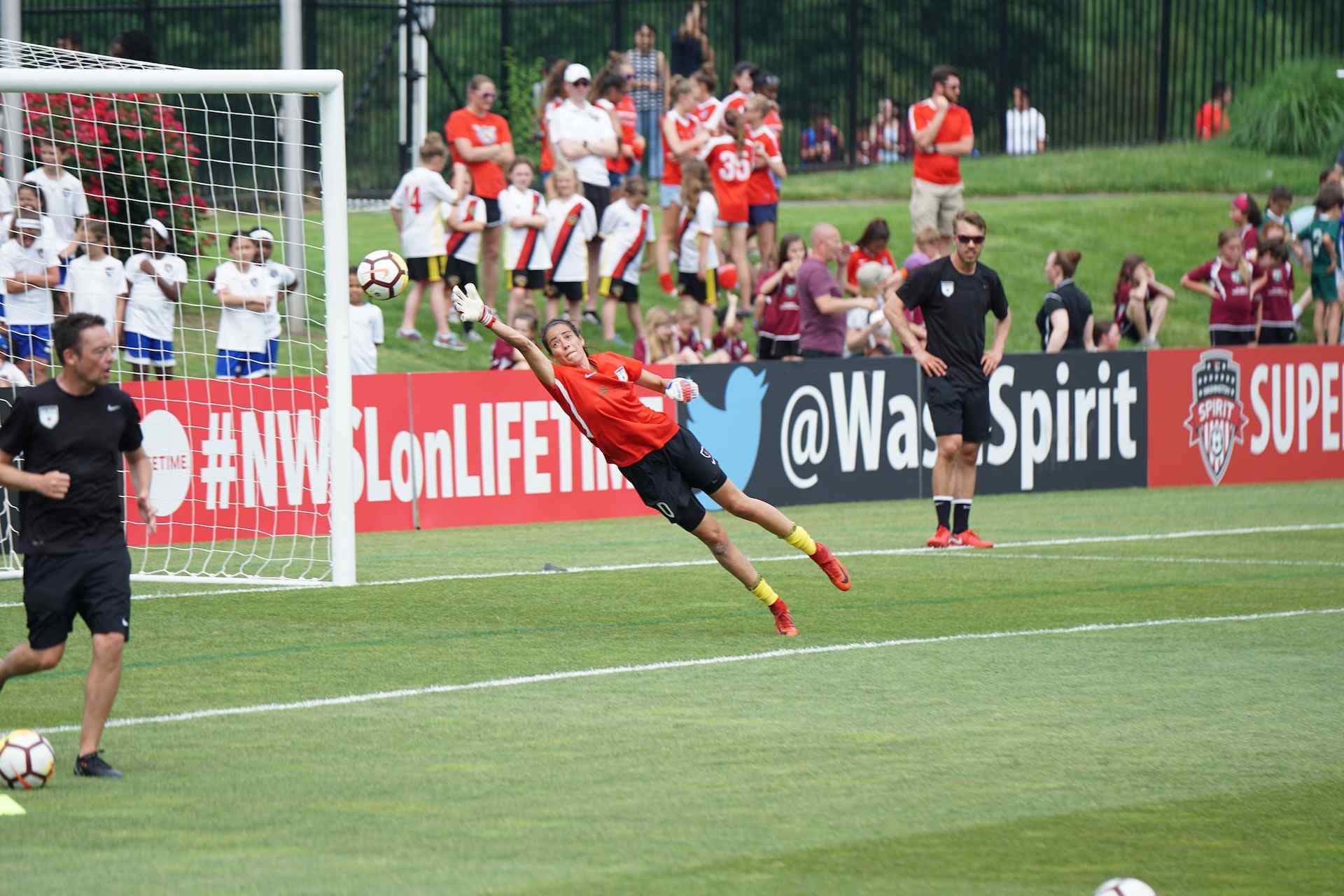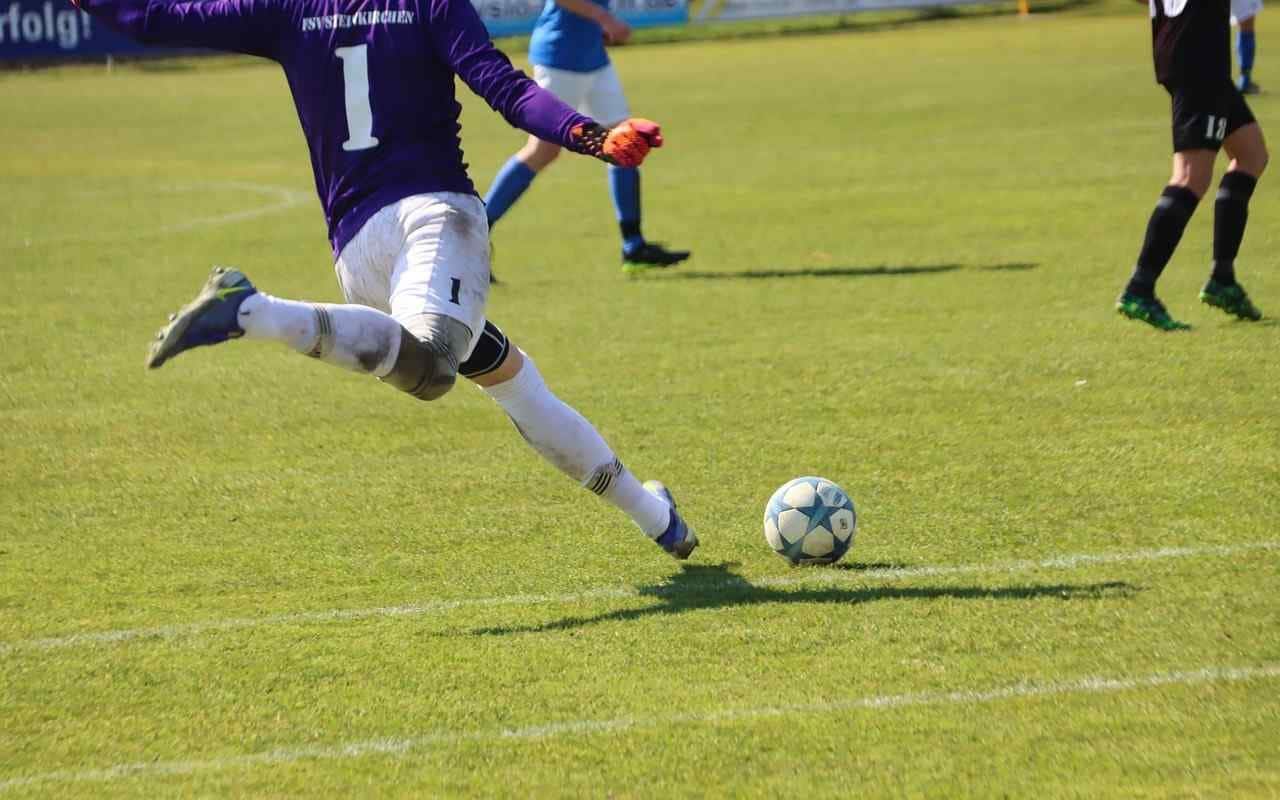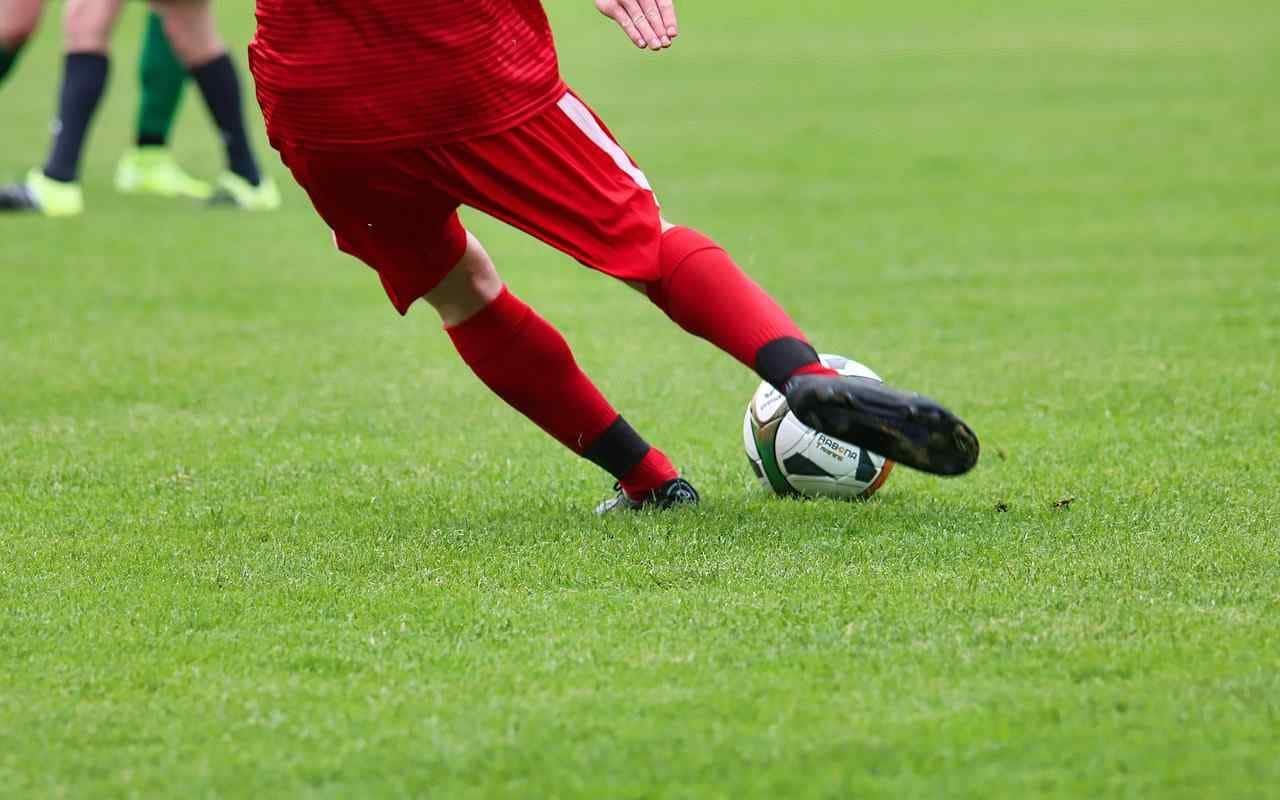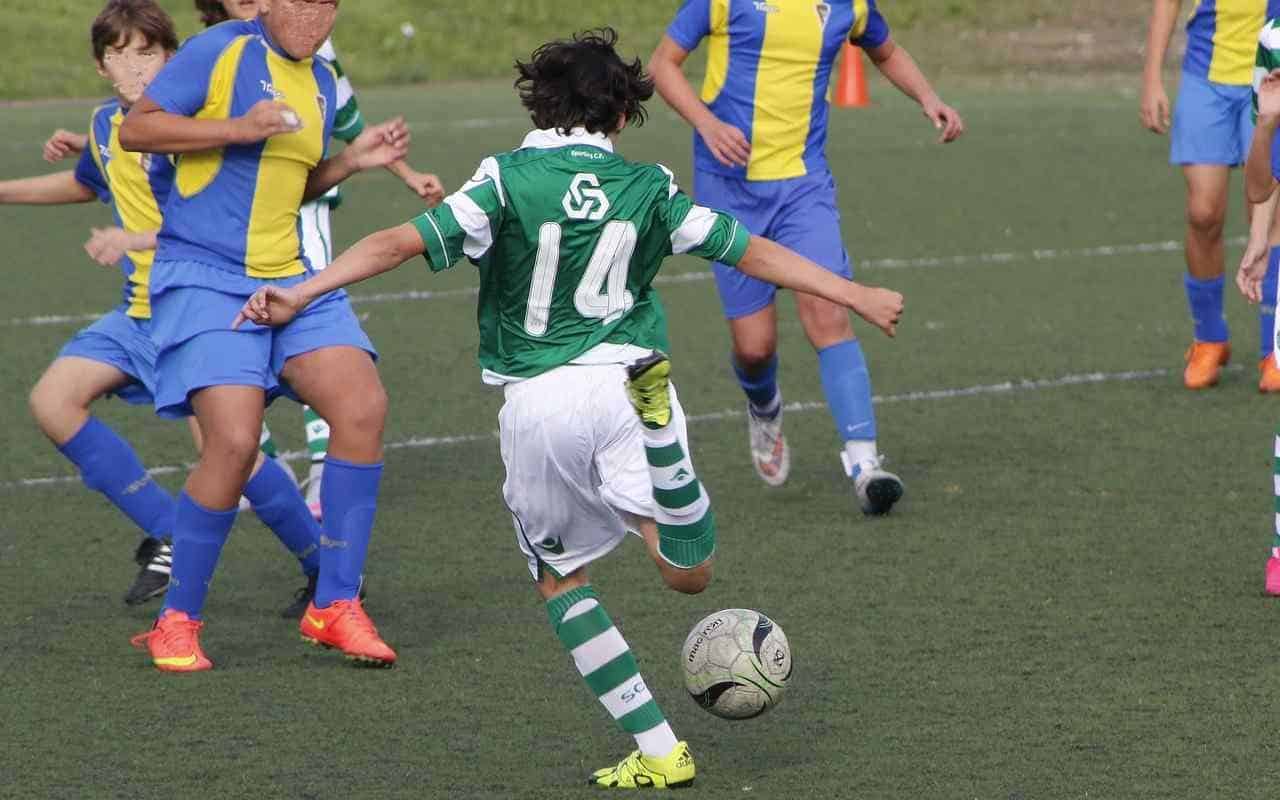
If you are a soccer fan, you have probably seen players curve the ball to avoid defenders, score goals, or make a precise pass. It is an impressive skill that requires technique, practice, and knowledge of physics.
This article will explain how a soccer player curves the ball, what factors influence the curve, and how you can improve your curve shots. Let’s get started!
Related: The Ultimate Guide to When Soccer is Played Around the World
The Basics of Curving the Ball

Before we dive into the physics of curving the ball, let’s go over the basics of how to do it. To curve the ball, you need to use the inside or outside of your foot to strike the ball with a specific spin. The spin causes the ball to curve in the air, creating a path different from a straight shot. There are two types of spin: topspin and backspin.
To create a topspin, you must strike the bottom half of the ball with your foot, using your toes to lift the ball. This creates a forward spin that causes the ball to dip and bounce forward when it hits the ground.
To create a backspin, you need to strike the top half of the ball with your foot, using your laces to hit the ball cleanly. This creates a backward spin that causes the ball to lift and then drop when it hits the ground.
To curve the ball, you need to add a side spin while creating topspin or backspin. To add side spin, you need to angle your foot and the ball in the direction you want the ball to curve.
If you want the ball to curve to the right, you need to strike the ball with the inside of your foot while angling your foot to the left. If you want the ball to curve to the left, you need to strike the ball with the outside of your foot while angling your foot to the right.
Factors that Influence the Curve
Several factors influence the curve of the ball, including the speed of the ball, the spin, the angle of the shot, and the wind. Let’s take a closer look at each factor.
- Speed: The faster the ball travels, the less time it has to curve in the air. This means that a slow shot is more likely to curve than a fast shot.
- Spin: The more spin you put on the ball, the more it will curve. This means that a shot with a lot of spin will curve more than a shot with less spin.
- Angle: The angle of your foot and the direction of your shot will also affect the curve. If you strike the ball with the inside of your foot and angle your foot to the left, the ball will curve to the right. If you strike the ball with the outside of your foot and angle your foot to the right, the ball will curve to the left.
- Wind: Wind can also influence the curve of the ball. If there is a strong crosswind, the ball will be pushed in the direction of the wind, making it more difficult to control the curve.
Improving Your Curve Shots

Now that you understand the basics of curving the ball and what factors influence the curve let’s go over some tips to help you improve your curve shots.
1. Practice Regularly: How to Master Curving the Ball
Curving the ball is a skill that requires practice, and the more you practice, the better you will become. It’s important to practice regularly, focusing on your technique and building strength and power in your legs.
Here are some tips to help you improve your curve shots and master the art of curving the ball.
First and foremost, practice with purpose. Don’t just kick the ball around aimlessly; set up specific drills to help you work on your technique. For example, you can practice curving the ball around cones or other obstacles or work on hitting a specific target with your curve shots.
When practicing, pay attention to your technique. Ensure you use the correct foot position and angle to create the spin and curve you want. Practice with both feet, as being able to curve the ball with both feet will make you a more versatile player.
It’s also important to vary the distance and angle of your shots when practicing. This will help you understand how the ball will curve at different speeds and angles. You can also practice curving the ball from different positions on the field, such as from a free-kick or corner kick.
Also read: GF Vs GA: Why Goals For And Goals Against Matter In Soccer
In addition to practicing your curve shots, you should also build strength and power in your legs. This will help you generate more spin on the ball and increase the power of your shots. Exercises such as squats, lunges, and calf raises can help you build strength and power in your legs.
Finally, be patient and persistent. Curving the ball is difficult to master, and it may take time to see improvement. Keep going even if your shots curve the way you want them to at first. Keep practicing and working on your technique; you will eventually see results.
2. Focus on Technique: The Key to Curving the Ball with Precision
When it comes to curving the ball, the technique is everything. You must use the correct foot position and angle to create the spin and curve you want. Here are some tips to help you focus on your technique and improve your curve shots.
First and foremost, make sure you are using the inside or outside of your foot to strike the ball, depending on the curve you want to create. Use the inside of your foot to curve the ball to the right and the outside to curve the ball to the left. This will create the necessary spin on the ball to make it curve.
The angle of your foot is also critical. To curve the ball to the right, angle your foot to the left when striking the ball with the inside of your foot. To curve the ball to the left, angle your foot to the right when striking the ball with the outside of your foot. The greater the angle, the more the ball will curve.
It’s also important to focus on the follow-through of your shot. After you strike the ball, follow through with your foot in the direction you want the ball to go.
This will help create a smooth, fluid motion that maximizes the spin and curve on the ball.
Start practicing your technique by practicing stationary shots, then move on to shots while walking or jogging. You can start practicing your curve shots while running or even in game situations as you improve.
Remember, the technique is not something you can perfect overnight. Developing the muscle memory and coordination necessary to curve the ball with precision takes time, practice, and patience.
Keep going even if your shots curve the way you want them to at first. Keep practicing and focusing on your technique, and you will eventually see improvement.
3. Experiment with Different Spins and Angles: Discover Your Perfect Curve Shot

Every soccer player has a unique style and technique for curving the ball. You need to experiment with different spins and angles to find your perfect curve shot. Here are some tips to help you find what works best for you.
First and foremost, start by experimenting with different angles. As mentioned earlier, the angle of your foot when striking the ball can significantly affect the curve. Try different angles and see what works best for you. A slightly different angle can create a more significant curve.
Next, try experimenting with different spins. Topspin can create a lower, more powerful curve, while backspin can create a higher, more floating curve. Try both spins and see which works best for you.
It’s also important to pay attention to the speed of your shot. A faster shot will create a different curve than a slower shot. Experiment with different speeds and see how it affects the curve of the ball.
In addition, consider the wind direction and other external factors that can affect the curve of the ball. For example, a tailwind can cause the ball to curve more than a headwind. Take these factors into account and adjust your technique accordingly.
Remember to take note of what works best for you. Keep a journal of your practice sessions and record what angles, spins, and speeds created the best curve shots. This will help you fine-tune your technique and create a reliable and consistent curve shot.
4. Analyze Your Shots: How to Identify Areas for Improvement
After each shot, it’s essential to take a moment to analyze what worked and what didn’t. This will help you identify areas for improvement and adjust your technique accordingly.
Here are some tips to help you analyze and improve your curve shots.
First and foremost, pay attention to the trajectory of the ball. Did it curve in the direction you intended? Was it a strong or weak curve? Did it curve too much or too little? Taking note of the ball’s trajectory can help you adjust your technique for the next shot.
Next, pay attention to the speed of the ball. Was it too fast or too slow? Did it have enough spin? Adjusting the speed and spin of the ball can significantly affect the curve, so take note of how it affects your shots.
Paying attention to your body position and foot placement is also important. Were you standing in the right position? Did you angle your foot correctly? Adjusting these small details can greatly affect the curve of the ball.
Finally, pay attention to external factors such as wind and field conditions. Was the wind affecting the curve of the ball? Was the field surface affecting your footing or the spin of the ball? Taking note of these external factors can help you adjust your technique accordingly.
Remember to note what worked and what didn’t after each shot. Keep a journal of your practice sessions and record your observations. This will help you identify areas for improvement and adjust your technique accordingly. You will develop a consistent and reliable curve shot with time and practice.
Final Thoughts
Curving the ball is a complex skill that requires practice, technique, and knowledge of physics. You can curve the ball in the direction you want by using the inside or outside of your foot to add spin to the ball while creating a topspin or backspin.
The speed of the ball, the spin, the angle of the shot, and the wind all influence the curve of the ball.
To improve your curve shots, practice regularly, focus on technique, experiment with different spins and angles, practice with a partner, and analyze your shots. With time and practice, you, too, can master the art of curving the ball like a pro.



